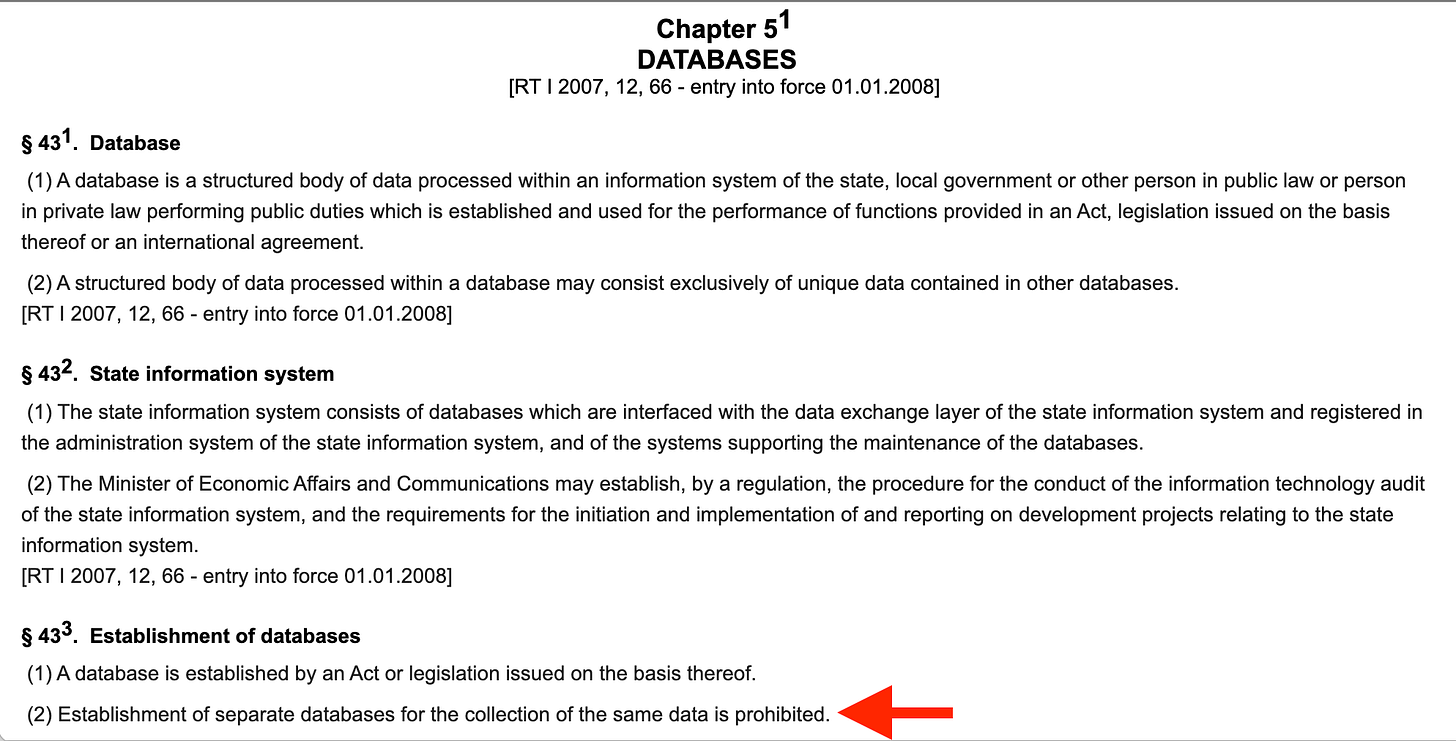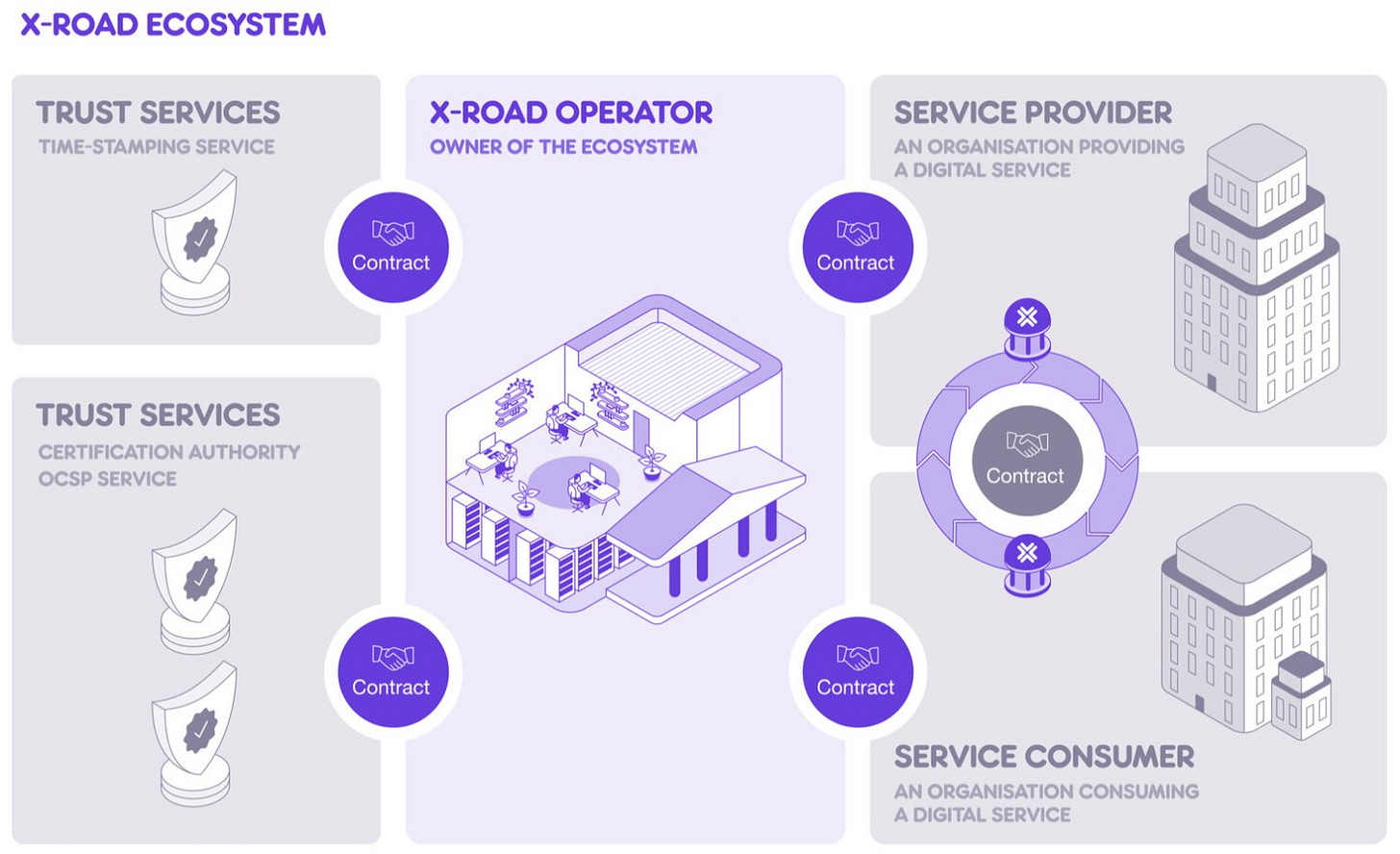How to pull off a Digital Health Utopia, the Estonia way
Having lived in the US for about half of my professional life and being born and raised in a country that makes up over 1/7th of the global population, I was able to experience first-hand two very diverse healthcare delivery models. Most tech in India is built assuming low-resource settings, whereas most tech in the US generally assumes otherwise. Both approaches are right within their geographical context. The same approach would likely not work cross-border.
While several factors make countries different, some common underlying themes seem to work while managing population health. But population health management can get tricky since sometimes we are talking about managing millions and sometimes (as in my country’s case) billions. Managing India is equivalent to effectively managing 34 very diverse countries.
Source: India in Pixels
But that’s not the point of this article. The point is that healthcare is a universal problem, so why reinvent the wheel if you can contextualize learnings from other health systems and accelerate your own digital health journey? India did this beautifully with its national digital health strategy called Ayushman Bharat Digital Mission (ABDM) - which I have covered in detail here. ABDM picked up healthcare standards and frameworks that had survived the test of time and had worked worldwide. It helped India leapfrog its digital health journey. So that’s the promise, which is primarily why I am very interested in learning about health systems around the world.
While I read a variety of material on the topic, I recently stumbled upon this article from The Politico. What caught my eye is that Germany has longitudinal health data for 88% of its population, yet its digital health eco-system is heavily paper-based. 95% of outpatient doctor-hospital communication is still on paper, and a measly 2% accesses electronic health records. That did not make sense to me. Where did that 88% digitized information come from when the ecosystem itself is not digital? And while I read further along, the article said, ‘Germany is years behind others in the bloc’. This baffled me because you would think that won’t be the case since Germany is considered the leader of the EU.
But more importantly, if Germany is lagging, who’s leading?
Enter Estonia
Bertelsmann Stiftung is a foundation that heavily focuses on digital health. It releases a lot of good data on European developments in space. And it consistently ranks Estonia as the leader across various such reports. One such report, aptly titled Smart Health Systems, focuses on the state of digital health across European countries. The report emphasizes the fact that bringing about a national change in digital health is hard. It requires immense political will, sound policy design, the use of cutting-edge technology, and seamless adoption across various stakeholders. But if done right, it also has tremendous potential to impact the trajectory of a nation positively.
Bertelsmann Stiftung assessed 14 European countries and 3 OECD countries (Australia, Canada, and Israel) in this report. As you can see on the list below, Israel is also in the top 5 digital health nations. If you want to know why - I wrote a detailed article covering the Israeli health-tech landscape here.
Now if you look closely at the list, you will realize that Estonia is not only the overall leader but also the leader in every category.
Not that I was shocked to see the name because I knew Estonia was always punching above its weight in digital, but I didn’t know it was doing so in health tech. I have a hunch that the rest of the world may not even be aware of things that Estonia has managed to pull off in the last 2 decades. And I take the creative liberty to imagine a conversation between Estonia and the rest of the world if they meet at a bar.
World: Hey Estonia, soooo …. read that article on you. Congratulations on all that digital success, but what exactly is your accomplishment that you are “leading the Bloc.”
Estonia : *Takes a deep breath* You ready?
We save 2% of our GDP just by using digital signatures
Our data exchange layer alone has saved more than 800 hours of working time
You can start the business application online and watch a movie. By the time you are done, your application will be approved - it takes 3 hours. Yes, you heard that right.
98% of businesses are established this way
99% of all of our banking transactions are online
95% of the tax declarations are filed online - in 3 minutes
98% of Estonians have an electronic ID
World: Oh wow, this is really …. (Estonia interrupts)
Estonia: Want to know about digital health?
100% of our citizens have digital longitudinal health records accessible throughout the country
99% of our prescriptions are digital
Not only the patients but even their guardians can access patient information if authorized
You can block or unblock access to your health information whenever you want
And finally, we have not had a system downtime since 2001 - yes, since the last 2 decades
** Imaginary Mic Drop **
Source: Google
Enough said? But to understand how Estonia pulled this off, we must go back in time.
Circa 1990: The origin story of all things digital
After being ruled for over 5 decades, Estonia became independent in 1991. It found itself in a tricky position - legacy systems surrounded it and did not have a lot of resources. As precarious as it is, Estonia realized that this situation presented a unique opportunity to do things right. Estonia brainstormed long and hard on transforming itself into the digital juggernaut it is today. Now, if you put yourself in Estonia’s shoes, you would realize this was very hard. When you get independence and have a ship to steer, all you want to do immediately is gain control, ensure that the ship doesn’t sink, take it to auto-pilot, and then think about other things, right?
Thankfully Estonians did not give in to this pressure. They knew it in their bones that this was an opportune time to start afresh. And they went down the road where all good things should start - policy.
Source: Original meme created by yours digitally
So on an eventful day, as the sun shone over the Baltic state, Estonians huddled together to brainstorm on a concise yet comprehensive vision of how they planned to become an ‘information society’. The policy document was forward-looking for its time because it was 1991, and the document appreciated the fact that information technologies are constantly going to change, which needs to be accommodated in the policy design. But within the ambit of what was known at the time, the Principles of Estonian Information policy were born. The policy outlined 4 broad areas of focus.
Modernisation of legislation
Supporting the development of the private sector
Shaping the interaction between the State and the citizens
Raising the awareness of problems concerning the information society
Estonia worked tirelessly in all of these areas. Not only did it start right, but it also did not rest on its laurels and kept introducing policy reforms consistently over 2 decades.
Estonia believed in creating an open digital ecosystem. All IT resources were intended to be an open standard and open source to enable private innovation and even utilization by other countries. This belief took Estonia’s rockstar open-source solution (which I will cover soon) to the Digital Public Goods registry. Another fundamentally strong policy that Estonia implemented was the Once Only Principle, which it inherited from the EU. It means that every administration, government entity, and even private establishment that collects citizens’ data once can never ask for the same data again. This sounds unbelievable, right? I can only imagine how much time and effort and, needless to say, money is saved just because of this simple lever that, frankly, any country can pull. And to tie the loose ends, Estonia went ahead and converted it into law. The Public Information Act of 2007 prohibits creating a separate database to collect the same data.
Source: Policy document
As a result of all these foundational steps, Estonia elevated itself to a fully digital nation with almost 99% of the public services available online 24 hours a day, all days of the week. The only areas where online services are not possible are marriage and divorce. The e-Estonia website says, ‘You still have to get out of the house for those’. I concur that’s probably a good thing. The efficiency and transparency built by the country are also unparalleled. The website claims that Estonia saves over 1400 years of time annually because of these foundational things that it got right.
Source: e-estonia.com
But as they say - You stand tall on the shoulders of giants. And those giants for Estonia are the 2 fundamental building blocks - electronic ID and X-road. And while electronic ID has existed for over 2 decades and is an integral part of Estonian life, I am more intrigued by this digital highway called the X-Road.
All roads lead to X-Road.
X-Road is the underlying architecture powering the information state. It is a distributed data exchange layer, sort of a freeway for data to move freely from one entity to another within the legal bounds of the request. The first iteration of X-Road was developed and released by the Information System Authority and Ministry of Economy and Communication in 2001 and is now managed by the Nordic Institute of Interoperability Solutions (NIIS), a non-profit entity that Estonia, Finland, and Iceland are a part of. Given that X-Road is open source, the entire source code is available on GitHub.
Source: e-estonia.com
The primary idea was to have inexpensive building blocks for data exchange. Estonia recognized that several databases were operating in silos and did not have a good enough way to exchange data, leading to inefficiency and increased costs. The architecture has a couple of building blocks - Central Services and Security Servers. Information Systems, Time Stamping Authority (TSA), and Certification Authority (CA) keep the information flowing. In the interest of not getting too technical, the security, policy, and communication protocols between all the participating entities are agreed upon and managed by the implementation owner, with each of the aforementioned entities playing a specific role. This is all done to establish and manage trust and ensure the authenticity of the sender, requester, and, more importantly, data. As you can see in the visual below, there are specific contracts between all entities, and till the time you abide by those contracts, you are good to exchange data on the digital highway.
Source: x-road.global
X-Road has several implementation models - national, regional, local, and even domain-specific within a local implementation. Out of these, X-Road is primarily used as a ‘national’ data exchange layer, and as such, it could very well be used even for cross-border data exchange. The only condition is that whoever wants to exchange data with Estonia should also be on X-Road. This feature of X-Road is called federation. And typically, in national implementation, the government owns this entire ecosystem. The government then sets the rules of this implementation and the process to follow to integrate with their version of the implementation, and the integrator needs to abide by those rules to exchange data meaningfully. Finland and Iceland have already jumped on the bandwagon. Also, as mentioned before, these national implementations can be scaled down to a regional or a local implementation, as is the case in Argentina, where X-Road happens to be implemented as the regional data exchange platform.
Source:
https://www.niis.org
And this cross-border exchange is not just a theoretical construct; the world seems to have taken up Estonia on its offer. There are 15 international implementations already, and 24 in the consultation phase. India is one of them. It would be very interesting to see how this plays out, especially given India’s robust Ayushman Bharat Digital Mission (ABDM) ecosystem almost parallel to X-Road, at least in the context of Healthcare.
Source:
https://x-road.global
Coming to the domain implementation, Germany used X-Road within the realms of its healthcare domain to take their electronic prescriptions digital. And here’s the fun part. If you think all of what X-Road has to offer does not suffice your needs, you can go ahead and add your requirements in the form of a user story to X-Road’s publicly managed JIRA backlog. I mean, who has a publicly managed JIRA backlog ?!
Source: X-Road’s publicly accessible JIRA Backlog
The openness of this entire initiative really blows my mind. So where does all this magic take us in terms of healthcare?
Final Act: Digital Health
Estonia meticulously, strategically, and patiently built all those building blocks over the years and kept iterating incrementally. If you have worked in the EHR space, you know it is not for the weak-hearted. If you are the ones building it, good luck. It is, in many ways, central and yet the most difficult piece of the healthcare puzzle. So you typically build a module or two, perfect it, move on to the next couple of modules, perfect them, and hopefully piece them together into an EHR.
Estonia went straight to EHRs. A big, hairy, audacious goal, you say? I agree.
Before we unpack the Estonian e-health enigma, it is important to recognize the man who led the revolution - Dr. Madis Tiik. He was the chief executive at E-Health Foundation, a special organization created by the Govt. of Estonia for conceiving and executing the idea of electronic health records whose only mandate was to develop the capability to share data freely. Of course, there was a pushback from the physician groups who wanted to hold data close to them, but the ethics workgroup reasoned out the societal benefits of data sharing, and sense prevailed. Also, back in 2004, the Estonian citizenry was surprisingly bought into the idea that it was the fundamental right of the patient to own the data they helped create.
Once there was buy-in, family physicians swung into action, followed by hospitals, and this was the seed group that made it happen. To make sense of the scale, less than 10 people kicked the doors open for the rest of the crowd. That’s all it takes. And data sharing was not expected for all medical data created, but only a subset of it that could move the needle on health outcomes. The broad set of documents chosen as the core dataset needed sharing - discharge letters, referrals, ambulatory notes, lab results, prescriptions, and X-rays. Altogether 50 different document types were standardized, and the decision was made to store them centrally - which basically ended up being the longitudinal health record. The US has similar guidance called the US Core Data for Interoperability (USCDI). In the Estonian data management model, though, you observe an interesting combination of federation and data centralisation. So while Australia has a tough time with its national patient record, Estonia seems to have cracked its model. The first implementation version came out well since the initiative was a work-in-progress for over 5 years pre-launch. 99% of the health data created in Estonia since 2015 is fully digitized. 97% of the hospital discharge letters are sent electronically to the central database. 2 years later after it solved the national patient record, Estonia turned its focus to digitizing prescriptions. And it cracked that too. 99% of all prescription creation and routing done currently is electronic. Almost every Estonian hospital and pharmacy is on the network.
Just to get a flavour of how the Estonian Patient Portal is structured, here is a sneak preview. What you see below are screengrabs from one of the video presentations publicly accessible on e-estonia.com. The visual below is the landing page where you see all the important data points relating to your health. You can see your case summaries, prescriptions, referrals, and most importantly, something called ‘time-critical data’. This is data that is ‘time critical’ to making a decision on how to treat you if you were to land up in an emergency room. This data is comprised of medications, allergies, and your blood group. This ensures that the emergency medical team catering to you can treat you in that situation best.
Source: Screengrab from e-estonia.com
These are your in-patient and out-patient case summaries. These case summaries are worth their weight in gold when you are being transferred in or out of a medical facility.
Source: Screengrab from e-estonia.com
You can lock or unlock a specific case summary as you wish. Now here’s where things get interesting. While you may provide access to certain elements of your health information, you may not always know who viewed your health data and, if so, when. A simple solution to this is a logbook that is managed on the portal, which shows exactly who looked at your data and when. The data ownership laws are designed so that anyone who is caught accessing data illegally is in for legal trouble. The video asks a very poignant question while driving home the point - ‘Do you know who has looked at your medical data in the last 5 years?’ - I certainly don’t.
To understand the impact of this digitisation, there are over 40 million documents in this central repository as of September 2021. e-Prescriptions cover every medicine that gets prescribed in the country. 2.5 million queries are made to this central database by various stakeholders every month. Finally, and most importantly, 100% of the patients today have a digital health record that is accessible throughout the country.
Estonia is a digital nation in the truest sense. In fact, it is nicknamed ‘e-Estonia’. Its charter is to have open standards, open markets, and open government with technology at the heart of everything it does. While it tries and builds technology that the rest of the world can use, it elevates this thought by introducing the concept of country as a service. And while the world watches with awe how Estonia knocks it out of the park one initiative after the other, I can only wonder … how did they get so many things right?
And, more importantly, what’s next for a nation that seems to have already attained digital health utopia?
References
Ayushman Bharat Digital Mission - India’s leapfrog moment: https://www.linkedin.com/pulse/ayushman-bharat-digital-mission-indias-leapfrog-moment-athaley/?trackingId=v%2FwFlO4Ch%2BB2O5GIFdyO7w%3D%3D
Germany Digital Health Article: https://www-politico-eu.cdn.ampproject.org/c/s/www.politico.eu/article/germanys-digital-health-efforts-are-flailing-is-a-lauterbach-strategy-the-ticket/amp/
X-road: https://e-estonia.com/solutions/interoperability-services/x-road/
BCG Case Study on Open Digital Ecosystem in Estonia - https://opendigitalecosystems.net/pdf/01-Estonia-Case-Study_vF.pdf
How Israel is beating the world in HealthTech: https://www.linkedin.com/pulse/ayushman-bharat-digital-mission-indias-leapfrog-moment-athaley/?trackingId=v%2FwFlO4Ch%2BB2O5GIFdyO7w%3D%3D
Principles of Estonian Information Policy: https://ega.ee/wp-content/uploads/2020/01/Eesti-infopoliitika-p-hialused.pdf
Digital Public Goods Registry: https://digitalpublicgoods.net/registry/x-road.html
Public Information Act of 2007: https://www.riigiteataja.ee/en/eli/514112013001/consolide#:~:text=The%20purpose%20of%20this%20Act,the%20performance%20of%20public%20duties
US Core Data for Interoperability: https://www.healthit.gov/isa/united-states-core-data-interoperability-uscdi
Estonian Patient Portal: https://www.digilugu.ee/login





















